Bertram A Fitzgerald is the publisher of the Golden Legacy Series of Black History Comic books. During the decade between 1966 and 1976 he acted as editor and publisher for the series and wrote almost half the books. He also oversaw production of 7 issues of the integrated teen comic Fast Willie Jackson, as well as an anti drug comic.
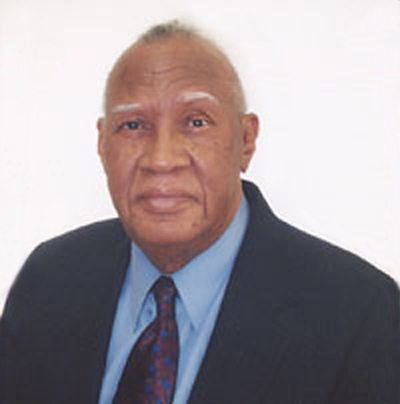
Mr Fitzgerald was born in 1932 in Harlem, New York, the first child of Bertram Fitzgerald Sr. and Hattie E. Sessoms. His father had been born in Jamaica, and lived in Cuba before coming to the US, and his mother was born in Virginia.
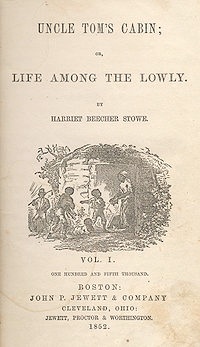 Bertram had only been a cursory reader of comics as a child, reading only a small amount of the newsstand’s offerings, but he liked the Classics Illustrated series. He remembers enjoying the adventure stories of the early issues. The Three Musketeers, Ivanhoe, the Count of Monte Cristo, the Last of the Mochicans, and Moby Dick, these stories touched his imagination and he equally enjoyed reading the biographies of the writers at the end of the book. But as much as he identified with the heroes of these sagas, so too was he offended by the stereotypical portrayal of his race in such books as Uncle Toms Cabin.
Bertram had only been a cursory reader of comics as a child, reading only a small amount of the newsstand’s offerings, but he liked the Classics Illustrated series. He remembers enjoying the adventure stories of the early issues. The Three Musketeers, Ivanhoe, the Count of Monte Cristo, the Last of the Mochicans, and Moby Dick, these stories touched his imagination and he equally enjoyed reading the biographies of the writers at the end of the book. But as much as he identified with the heroes of these sagas, so too was he offended by the stereotypical portrayal of his race in such books as Uncle Toms Cabin.
His love of reading grew past the comic book stage and Fitzgerald progressed to more adult material, and eventually found himself in the Air Force, a fan of W. Sommerset Maughm, and reading biographies of Alexander Dumas and Alexander Pushkin. He was dismayed that in each of these biographies, the writers took great pains to separate Dumas and Pushkin from their African heritage. He recalled this fact was also omitted from the Classics Comics biography of Dumas he had read years before, and wondered how it would’ve effected his own life to have known this great writer had been Black at a time when his own understanding of the world and his potential in it was being formed, and he began to think of comics in a different way. He began to think of comics as a misused tool for education and social change. Fitzgerald remained in the Air Force during his college years, being stationed in Texas, California, Wyoming and Michigan, where he attended night school after completing his military duties. He graduated from Brooklyn college in 1953 with a degree in accounting.
In 1966, Fitzgerald was working for the New York State Department of Taxation and Finance when he jumped feet first into publishing. He acted as defacto editor of the first edition of Golden Legacy, though in hindsight, he feels he wasn’t fully prepared for the complexity of the job. He decided on the topic for the first issue, and approached his Army friend Leo Carty, with whom he’d worked before, designing a board game Fitzgerald had created based on the stock market. He asked him to write and illustrate it. Fitzgerald later made minor changes in the script.
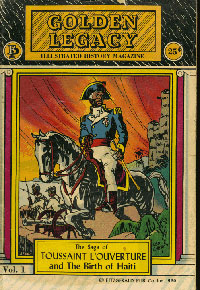 The first edition of Golden Legacy Volume 1, The Saga of Toussaint L’ Ouverture, and the Birth of Haiti was published in 1966, and now only needed to be distributed. Fitzgerald had had a difficult time finding a printer able to do good four color work on a Black oriented magazine, eventually having to settle on a small out of state printer who’s lack of modern printing equipment is apparent on the early editions, and now he faced the same problems with distribution. Comic books were seen as entertainment, not education, the market for Black educational material was considered marginal indeed, and Fitzgerald was unable to break into this biased newsstand monopoly. Instead he worked briefly with a loose group of independent distributors called commission men, who supplied the Black community with specialized products like darker stockings, beauty products and dream books, which were overlooked by white distributors. He found it difficult to get paid by these men.
The first edition of Golden Legacy Volume 1, The Saga of Toussaint L’ Ouverture, and the Birth of Haiti was published in 1966, and now only needed to be distributed. Fitzgerald had had a difficult time finding a printer able to do good four color work on a Black oriented magazine, eventually having to settle on a small out of state printer who’s lack of modern printing equipment is apparent on the early editions, and now he faced the same problems with distribution. Comic books were seen as entertainment, not education, the market for Black educational material was considered marginal indeed, and Fitzgerald was unable to break into this biased newsstand monopoly. Instead he worked briefly with a loose group of independent distributors called commission men, who supplied the Black community with specialized products like darker stockings, beauty products and dream books, which were overlooked by white distributors. He found it difficult to get paid by these men.
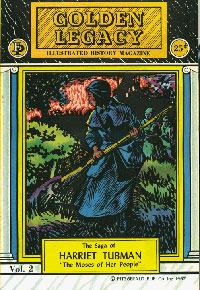 Volume 2, the Saga of Harriet Tubman, with story by Joan Bacchus and art by her and Tom Feelings was produced and distributed this way, but by Volume 3 Fitzgerald was looking for a more creative method of funding and distribution. He approached the Coca Cola Company with the idea that since Blacks accounted for a greater per capita share of soft drink sales than whites, they should acknowledge this by cultivating Black customers through sponsorship of Black culture. Coke was interested and they asked Fitzgerald to suspend newsstand distribution until they could work out a deal, which took about a year.
Volume 2, the Saga of Harriet Tubman, with story by Joan Bacchus and art by her and Tom Feelings was produced and distributed this way, but by Volume 3 Fitzgerald was looking for a more creative method of funding and distribution. He approached the Coca Cola Company with the idea that since Blacks accounted for a greater per capita share of soft drink sales than whites, they should acknowledge this by cultivating Black customers through sponsorship of Black culture. Coke was interested and they asked Fitzgerald to suspend newsstand distribution until they could work out a deal, which took about a year.
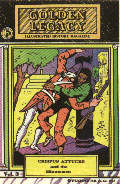 During this time Fitzgerald was introduced to Tom Feelings, an artist with a similar vision who had already prepared an illustrated feature on Crispus Attucks for another publication, and this feature was adapted for the third volume of Golden Legacy, with additional artwork by golden age artist Ezra Jackson.
During this time Fitzgerald was introduced to Tom Feelings, an artist with a similar vision who had already prepared an illustrated feature on Crispus Attucks for another publication, and this feature was adapted for the third volume of Golden Legacy, with additional artwork by golden age artist Ezra Jackson.
This is the first issue to list Dr. Benjamin Quarles, Professor of History at Morgan State College as consultant, and is the first issue to feature a full color back cover ad for the Coca Cola Company featuring photos of Black models.
One of Coca Cola’s concerns was the lack of printing quality on the early issues, but with their new financial backing, Fitzgerald was able to to get a better press to take his business.
Fitzgerald believes it was his background as an accountant that allowed him to work out this deal to everyone’s advantage where Coca Cola bought ads before publication and would then buy bulk amounts of comics at a great discount to distribute them free to schools, libraries, and organizations such as the NAACP, the Urban League and the Reading is Fundamental programs. 11 titles were published this way over the next several years, and the final few books were published under similar arrangements with a number of other companies. Bowery Savings, Equitable LIfe, Avon Cosmetics, A & P Food Stores, AT&T, Woolworths, Exxon, Columbia Pictures, McDonalds and Philadelphia Electric all became supporters of this series.
Howard Darden became art director with Volume 7, and new material was published through 1976, with an approximate total of nine million copies distributed.
 In 1976 – 77 Fitzgerald tested the waters with an integrated teen comic called Fast Willie Jackson. It ran 7 issues between Oct 1976, and #7, September 1977. This book, while not code approved, received newsstand distribution and each issue had increased sales, but unfortunately did not reach the break even point until the last issue, and Fitzgerald was unable to continue publishing just as he was finalizing the sale of animation rights to Filmation, who had a current hit with Fat Albert and The Cosby Kids.
In 1976 – 77 Fitzgerald tested the waters with an integrated teen comic called Fast Willie Jackson. It ran 7 issues between Oct 1976, and #7, September 1977. This book, while not code approved, received newsstand distribution and each issue had increased sales, but unfortunately did not reach the break even point until the last issue, and Fitzgerald was unable to continue publishing just as he was finalizing the sale of animation rights to Filmation, who had a current hit with Fat Albert and The Cosby Kids.
In 1983, an out of state entrepreneur wrote Fitzgerald enquiring about buying a lot of comics and asking about circulation. Fitzgerald wrote a letter in return giving him these figures. From out of state this person was able to use this letter to falsely convince Fitzgerald’s printer that they had a business relationship, and arrange for a reprinting of the series on credit, a feat Fitzgerald was never able to do, being required to pay up front for all his printing despite major corporate clients. The entire series of 16 volumes was bootlegged, with the copyright illegally assigned to the interloper.
Fitzgerald had experienced discrimination and racism before, both subtle and gross, in both his private and business lives. It was hard to say sometimes which was which, or which was worse. In his dealings with printers and distributors, it wasn’t necessary for him to be specifically slighted racially as an individual, but the generalized misconception that comic books about Black history wouldn’t sell led them to be marginalized conceptually, and that inevitably to other blatant oversights, such as the omission in the Classics Illustrated series of Alexander Dumas’ racial heritage. These ‘small’ oversights eventually form a big picture where the audience for this material is marginalized to the point of never seeing a reflection of themselves in the general culture.
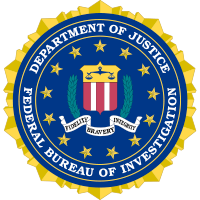 Fitzgerald had felt at a couple of points that as a business oriented community activist he may have been under surveillance by Cointelpro or similar program to neutralize Black activism. He received calls from all types of individuals and organizations and felt it only logical if any of his callers were under surveillance then he also would be by
Fitzgerald had felt at a couple of points that as a business oriented community activist he may have been under surveillance by Cointelpro or similar program to neutralize Black activism. He received calls from all types of individuals and organizations and felt it only logical if any of his callers were under surveillance then he also would be by
extension.
It was a stressful time for Fitzgerald. He was confounded by his experience with the court system over the four year copyright trial that followed. He sued the out of state party, who effectively disappeared, and his printer. He was originally given a monetary award, but liability had been split and the award was against the out of state entrepreneur, from whom Fitzgerald knew he would never collect. Upon appeal, he was given a larger award, but refused his legal fees, which ran to the amount of the award. The printer then appealed. Fitzgerald had suffered two heart attacks during this time and was warned by the judge ‘You’ll die before you get any of this money’. Mr Fitzgerald at this time was working for the Office of the Mayor of New York City as spokesman and advocate for the communications industry, and rather than appeal his case for the third time he retired to his full time occupation.
During the decade in which he produced 16 volumes of Golden Legacy Comics, Bertram A Fitzgerald left a legacy of his own, comprising of the most successful series of Afrocentric comics to date. The Golden Legacy comics are thoroughly professional in their writing, art, and production values, and full of enough historical surprises to interest adult readers presented in a package accessible to younger readers. Golden Legacy Volume 10 covers the mutiny on the slave ship Amistad, which has been made into a movie by Steven Spielberg. These comics utilized the talents of young unknown Black writers and artists, some of whom have gone on to positions of prominence, such as Joan Bacchus Maynard, who is now executive director for the Weeksville Society, excavating Black revolutionary war sites in Brooklyn, as well as established cartoonists of other races such as Charles Molina, Tony Tallarico and Don Perlin. Despite the racial hassles he experienced himself, Fitzgerald’s only criteria for those he employed was that they could produce professional work. ‘I just couldn’t bring myself to be a hater,’ he said recently, ‘it just didn’t make sense to justify their hatred in any way.
Golden Legacy Comics are still in print and available through Fitzgerald Publishing Co. You can purchase these comics at their website – http://www.golden-legacy.com.
The Golden Legacy Series is a part of The Museum Of UnCut Funk Collection. The Fast Willie Jackson Comic Series is also a part of The Museum Of UnCut Funk Collection, and is profiled in a previous blog entry
Source: Tom Christopher
GOLDEN LEGACY COMICS
Volume 1 – The Saga of Toussaint L’Ouverture and the Birth of Haiti (1966)
Writer: Leo Carty
Art: Leo Carty
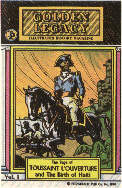
Volume 2 – The Saga of Harriet Tubman, the Moses of her people (1966)
Writer: Joan Bacchus
Art: Pencils: Joan Bacchus
Inks: Tom Feelings
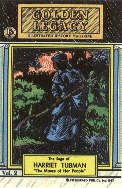
Volume 3 – Crispus Attucks and the Minutemen (1967)
Writer: Tom Feelings
Art: Tom Feelings and Ezra Jackson
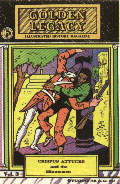
Volume 4 – The Life of Benjamin Banneker (1968)
Writer: Francis Taylor
Art: Ezra Jackson
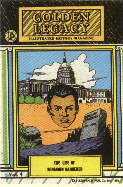
Volume 5 – The Life of Matthew Henson (1969)
Writer: Joan Bacchus
Art: Joan Bacchus
Volume 6 – Alexander Dumas and Family (1969)
Writer: Bertram Fitzgerald
Art: Ezra Jackson
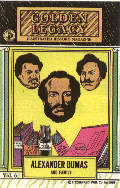
Volume 7 – Frederick Douglas Part 1 (1969)
Writer: Bertram Fitzgerald
Art: Howard Darden
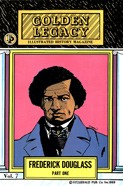
Volume 8 – Frederick Douglas Part 2 (1970)
Writer: Bertram Fitzgerald
Art: Howard Darden
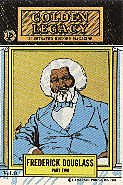
Volume 9 – The Life of Robert Smalls (1970)
Writer: Bertram Fitzgerald, Don Perlin
Art: Don Perlin
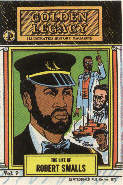
Volume 10 – Joseph Cinque and the Amistad Mutiny (1970)
Writer: Joan Bacchus
Art: Joan Bacchus
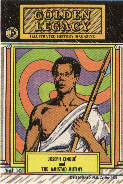
Volume 11 – Men of Action: White, Wilkins & Marshall (1970)
Writer: Bertram Fitzgerald
Art: Ezra Jackson,Don Perlin, Tony Tallarico
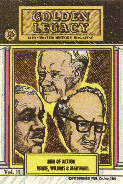
Volume 12 – Black Cowboys (1972)
Writer: Don Perlin
Art: Don Perlin
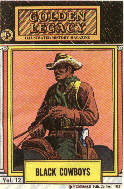
Volume 13 – Martin Luther King, Jr (1972)
Writer: Bertram Fitzgerald
Art: Don Perlin
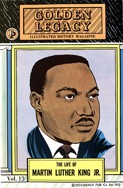
Volume 14 – The Life of Alexander Pushki (1972)
Writer: Warren Parker
Art: Tony Tallarico
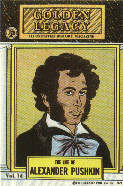
Volume 15 – Ancient African Kingdom (1972)
Writer: Robert Fitzgerald
Art: Howard Darden
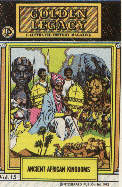
Volume 16 – The Black Inventors Latimer and Woods (1976)
Writer: Bertram A Fitzgerald
Art: Leo Carty, Tony Tallarico
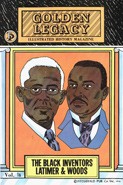

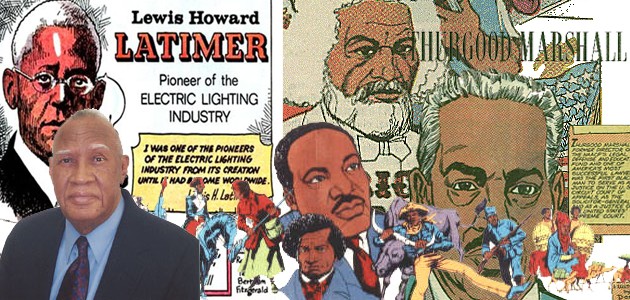
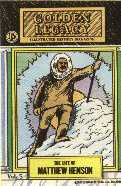
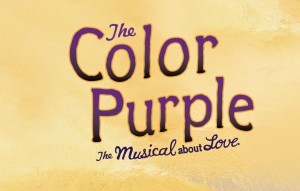
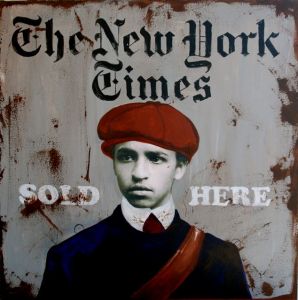
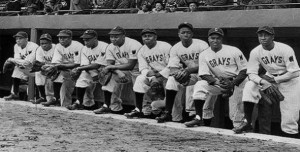

2 Comments
What a great post–I have a copy of Black Cowboys. I am currently writing an article about the American frontier and the role that Black men and women played in it.
I have the 16 copies of the Golden Legacy and live in the Columbia,S.C. area, and was wondering if anyone could direct me to where i may sell them…..i bought them when they were first published…thanks